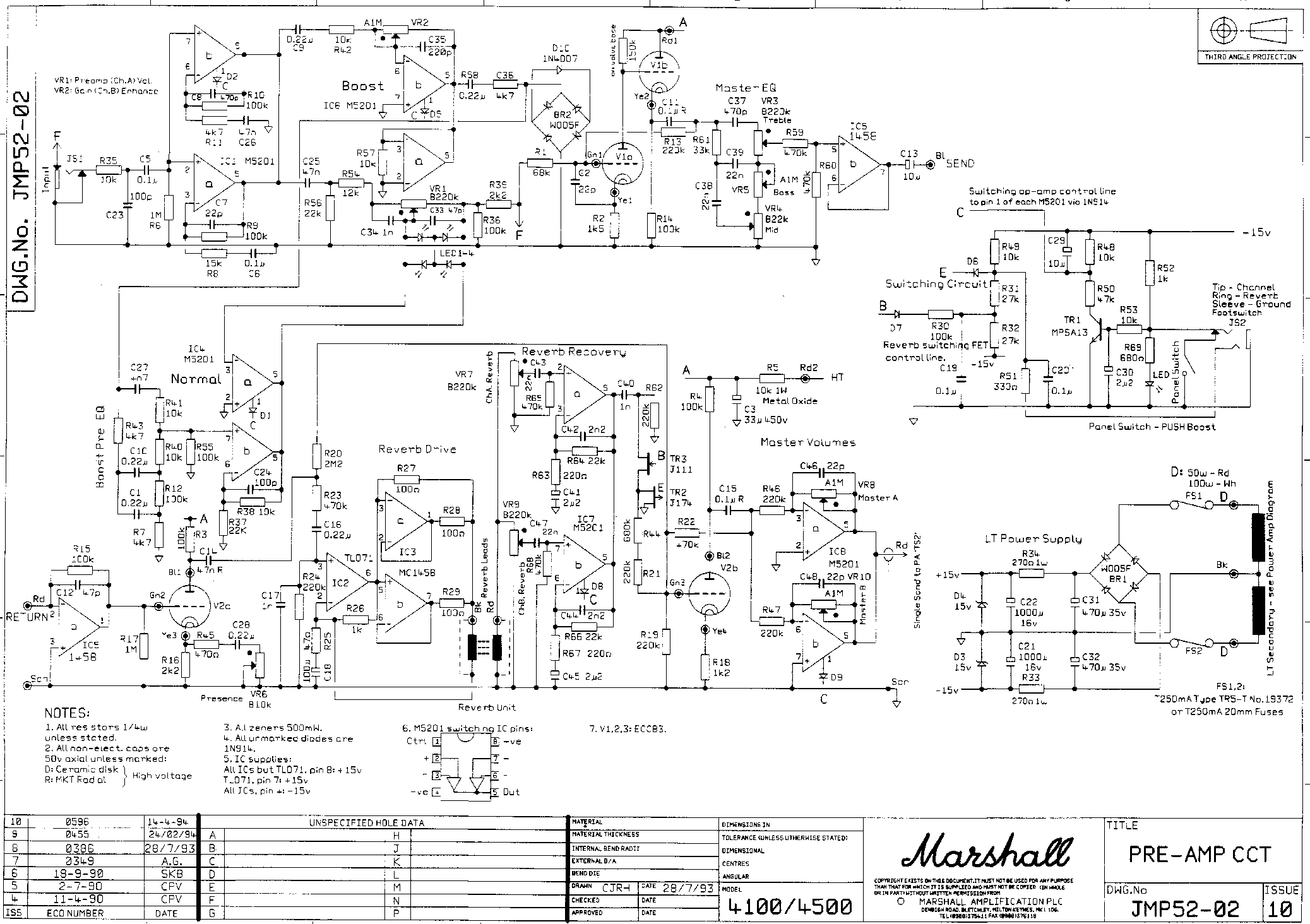Nope, no clippers in the circuit shown. D1 is a biasing diode and keeps V1b cathode at about 0.6volts.
This is a very "hot" bias and V1b will pass about 4mA and with a 407k anode load there will be very little anode voltage. I would expect the stage to give a lot of distortion....OR! R7 could be a misprint and be 47k in which case V1b has a Va of some 100V and would work fine.
Interesting to see the channel switching unit is just a chip array of bipolar transistors! "We" at least use FETs for signal switching and the valve snobs even criticize that!
Dave.
This is a very "hot" bias and V1b will pass about 4mA and with a 407k anode load there will be very little anode voltage. I would expect the stage to give a lot of distortion....OR! R7 could be a misprint and be 47k in which case V1b has a Va of some 100V and would work fine.
Interesting to see the channel switching unit is just a chip array of bipolar transistors! "We" at least use FETs for signal switching and the valve snobs even criticize that!
Dave.


